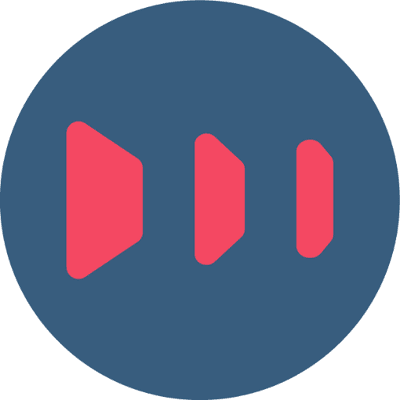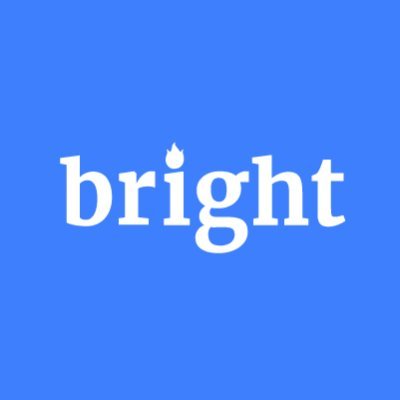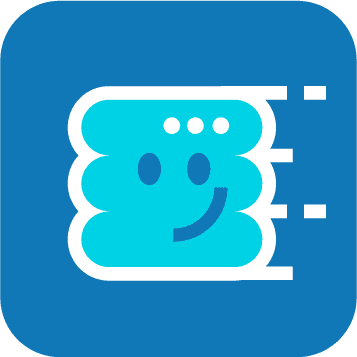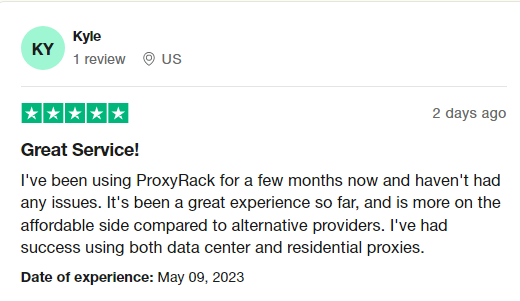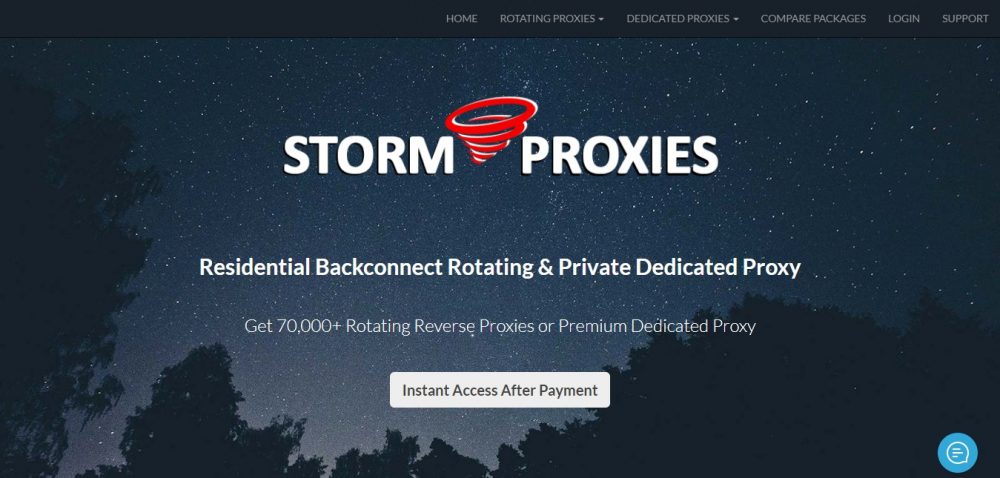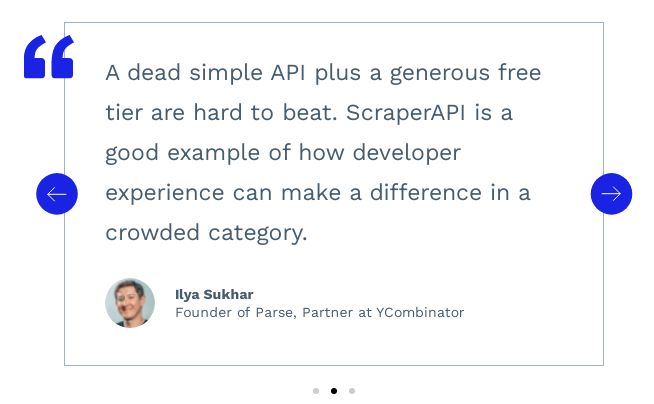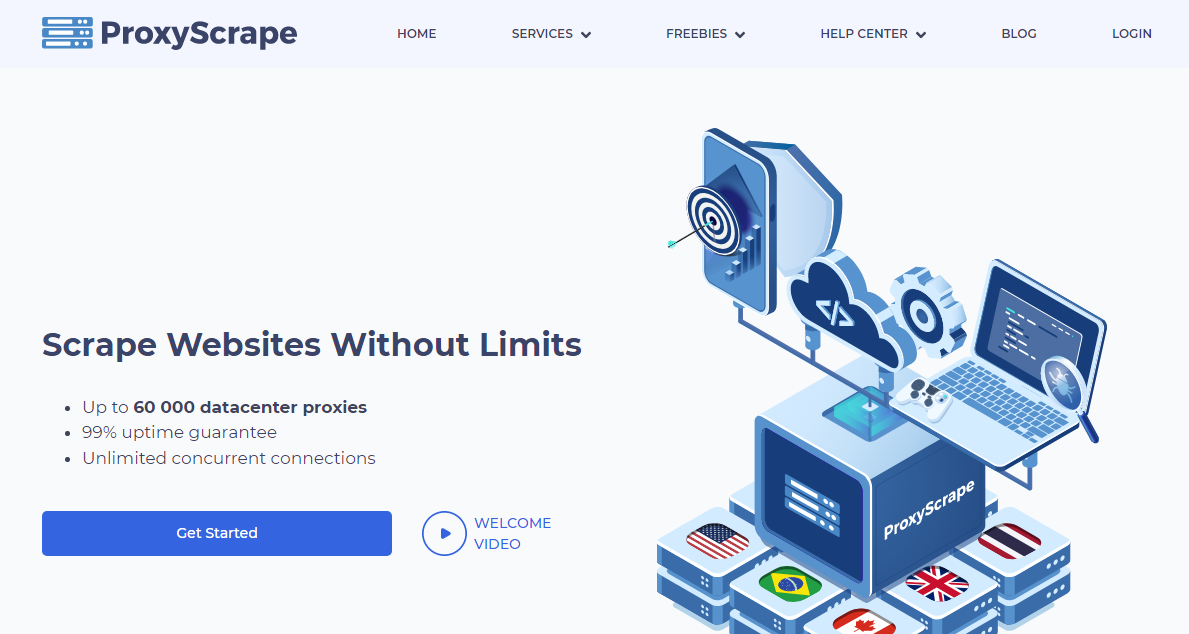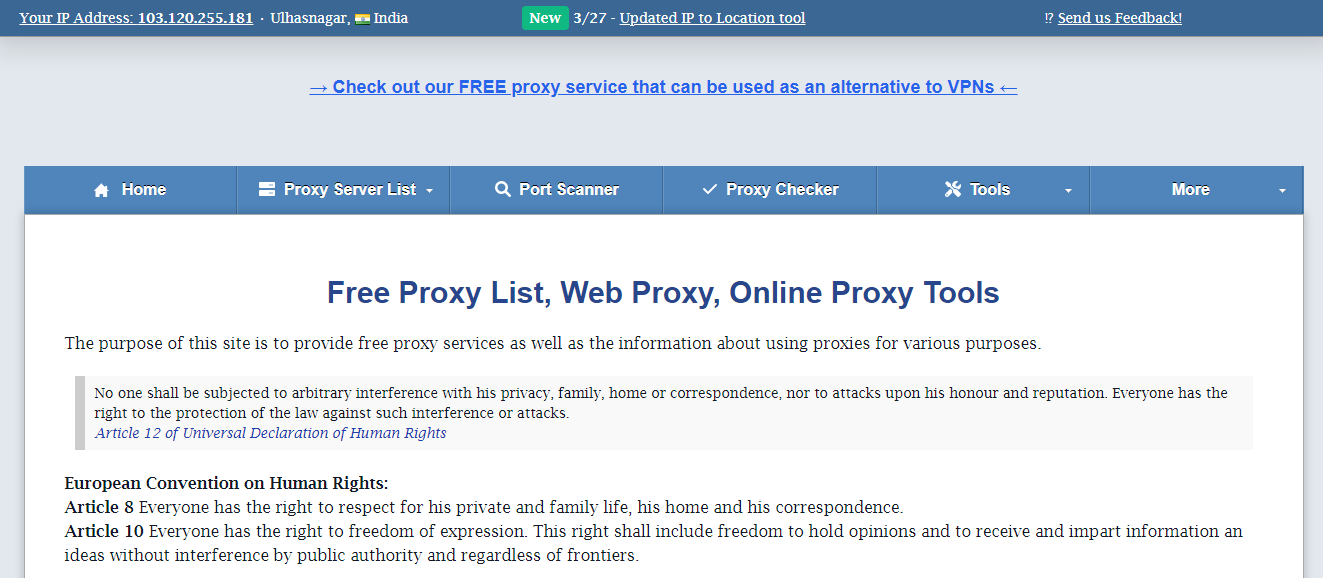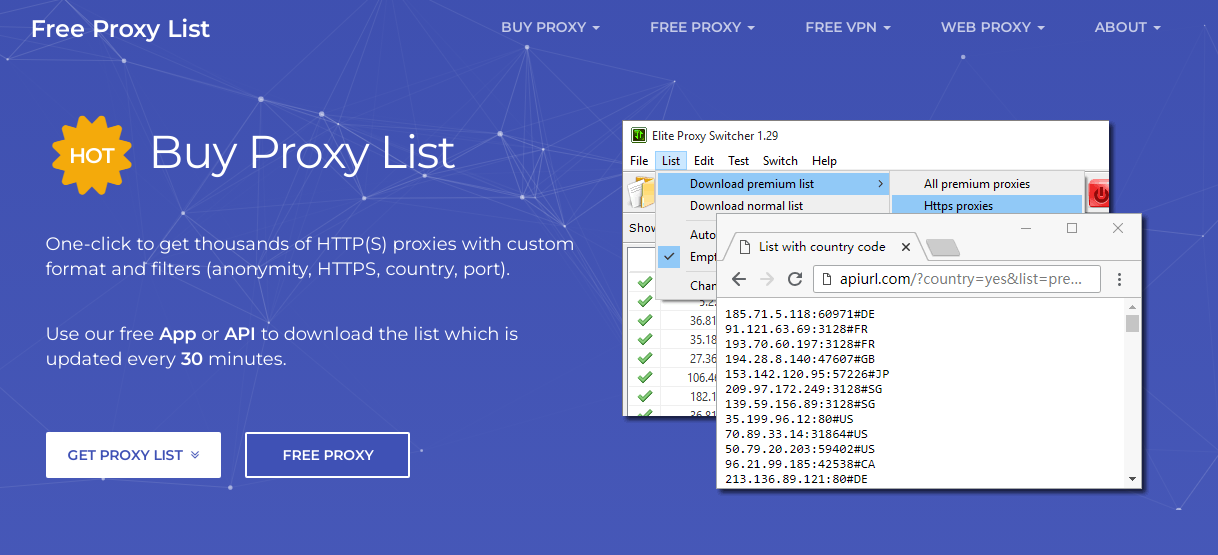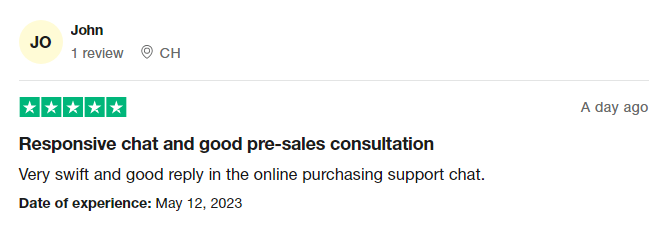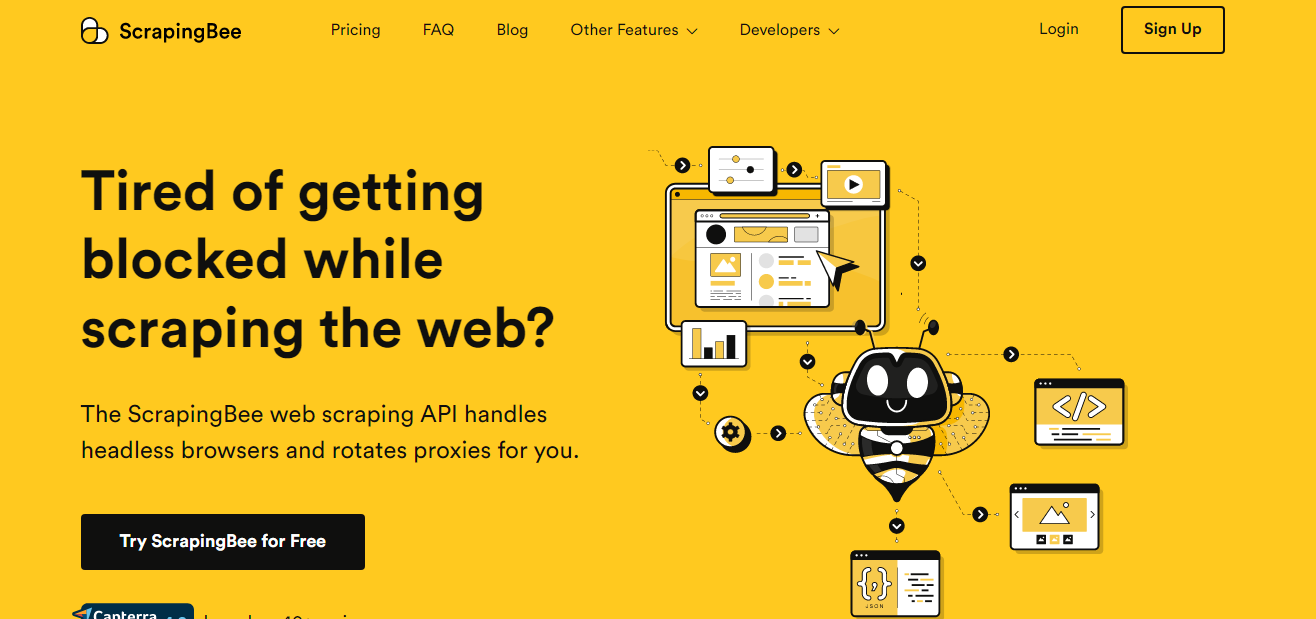If you’re looking to access web data without being blocked by the server, then you should consider using proxy servers.
Also known as “scraping proxies”, these devices help mask your identity and IP address when accessing websites. With a good proxy set up, you can even access web content normally restricted in your region or country.
In this blog post we’ll be taking a look at the top 11 web scraping proxies and discussing which one is my favourite. So if you’re looking for ways to scrape securely from any website with blazing fast speeds, keep reading!
Content Outline
Which Web Scraping Proxy is My favourite?🤔
When it comes to web scraping, I can’t help but sing my praises for ScrapingBee. Their web scraping proxy is by far my favourite, and for a number of reasons. Firstly, the pricing is incredibly reasonable, particularly when compared to some of their fellow competitors.
This makes it accessible for those of us who may not have unlimited funds to put towards web scraping needs. Secondly, the service is incredibly reliable. The last thing you want when web scraping is for the tool you are using to suddenly stop working mid-session.
With ScrapingBee, this has never been an issue for me. Lastly, the service is incredibly convenient. All you need to do is provide the URL you want to scrape, and ScrapingBeedoes the rest. No complicated set-up or learning curves required.
Overall, I can’t recommend scrapingbee’s web scraping proxy enough. It’s made my web scraping activities a breeze.
Benefits of Web Scraping Proxies:💡
Using a proxy for web scraping offers a variety of benefits. First, proxies mask the IP address of the user, thus enabling them to remain anonymous while collecting data from websites. T
his prevents website owners from blocking or banning IP addresses that scrape their sites. Additionally, using multiple proxies allows users to obtain data from multiple sources simultaneously without having network requests blocked.
Finally, proxies reduce the amount of bandwidth used for scraping by caching frequently requested data and reducing the number of requests sent to websites. This makes it easier to scrape large amounts of data quickly without slowing down the user’s network connection.
By using a proxy for web scraping, businesses can gain access to valuable information while protecting their identity and keeping their networks running smoothly.
1. Bright Data (formerly Luminati)
Bright Data is one of the largest residential proxy networks in the market currently. It has over 72 million rotating residential IPs and a 35+ million pool of IPs that are available in every country in the World.
Bright Data offers various best proxies, whether you want mobile proxies, residential proxies, or datacenter proxies.
Mostly their proxy is used for web scraping, ads verification, crawling, brand protection, and SEO auditing.
If we talk about its security, particularly authentication, Bright Data supports IP authentication and Username-Password authentication, making the Bright Data unique from other proxies providers in the market.
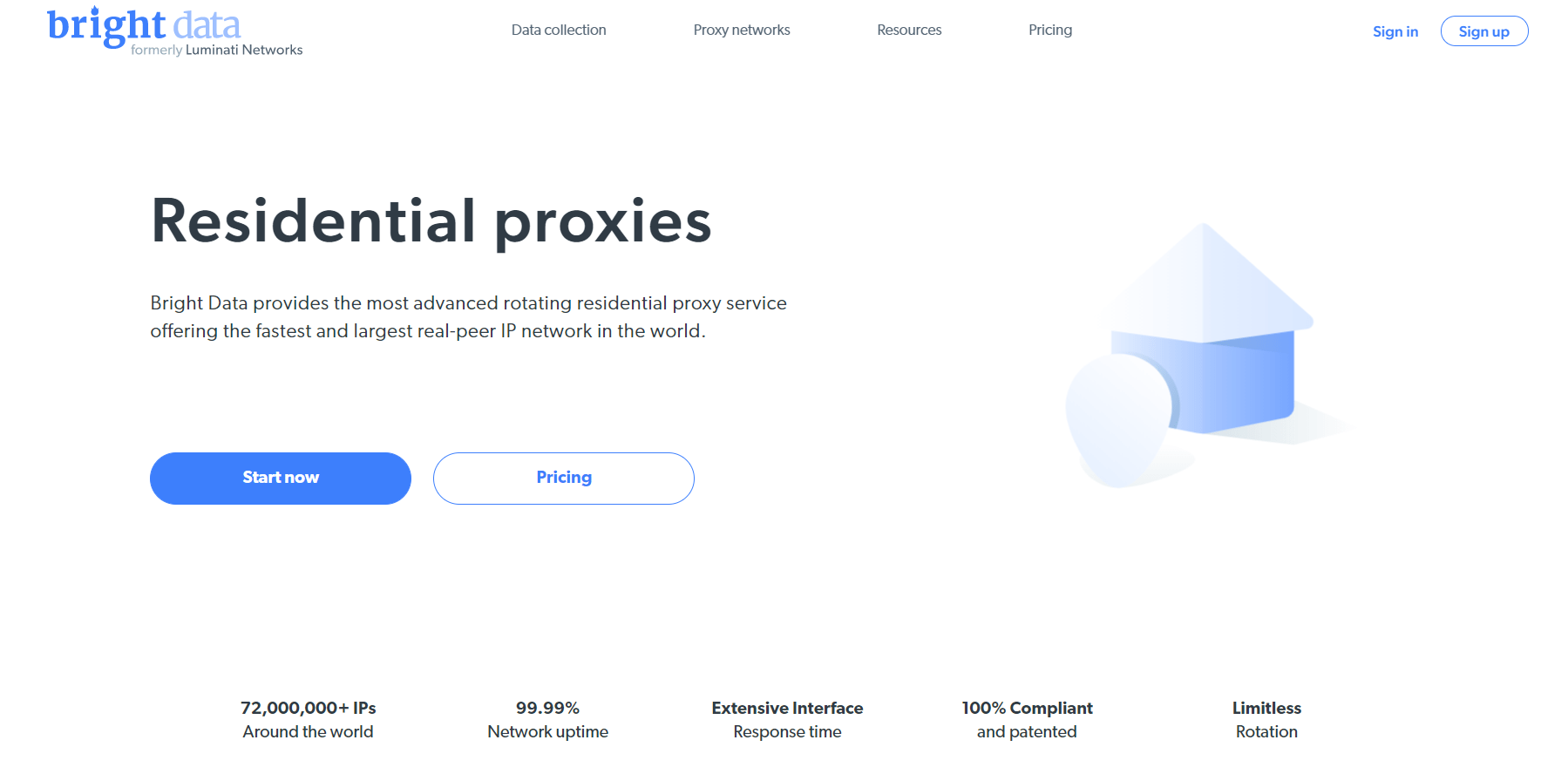
Pros & Cons
Let’s see what the pros and cons of using Bright Data are –
| Pros | Cons |
|
|
|
|
|
|
|
|
|
|
|
|
|
2. Proxyrack
Proxyrack is the only platform from where we can use proxies at just over 5,00,000 at any moment. Likewise, Bright Data, proxyrack also offers residential proxies that we can use for web scraping. It has over 2 million residential IPs in its pool and is not much expensive.
The average cost is 120$ for around 250 proxies per month.
You probably think that currently 250 is quite a less number of proxies to use per month, but unless you are web scraping at the most famous and popular website with a very big scale, this 250 amount would be enough to use for you.
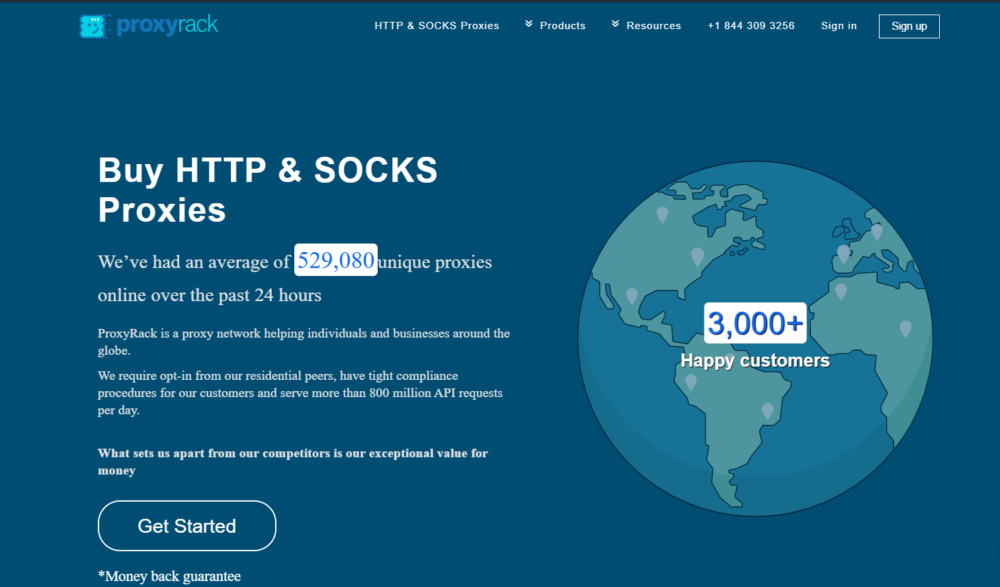
Pros & Cons
Let’s see what the pros and cons of using Proxyrack are –
| Pros | Cons |
|
|
|
|
|
|
|
Proxyrack Testimonials
3. Smartproxy
If you want the proxy that offers Bright Data services, but you don’t have that much of a budget to enter into their pool (which is $500), then Smartproxy is the best option for you.
Likewise, Bright Data, Smartproxy pricing also works on a total number of bandwidth. However, it has highly powered rotating proxies that continuously replace each IP in each request.
That’s what perfect web scripting needs. Providing these awesome services at quite a low price has secured the premium residential IP pool providers in the market.
If we talk about its pool size, it has over 10 million IP pool sizes with 5GB initial bandwidth allowed. Moreover, it offers web scraping in complex websites in more than 195 locations across the globe.
Smartproxy supports both Username-Password authentication and IP auth features for authenticating and providing Geo-targeting across the World (most cities/counties).
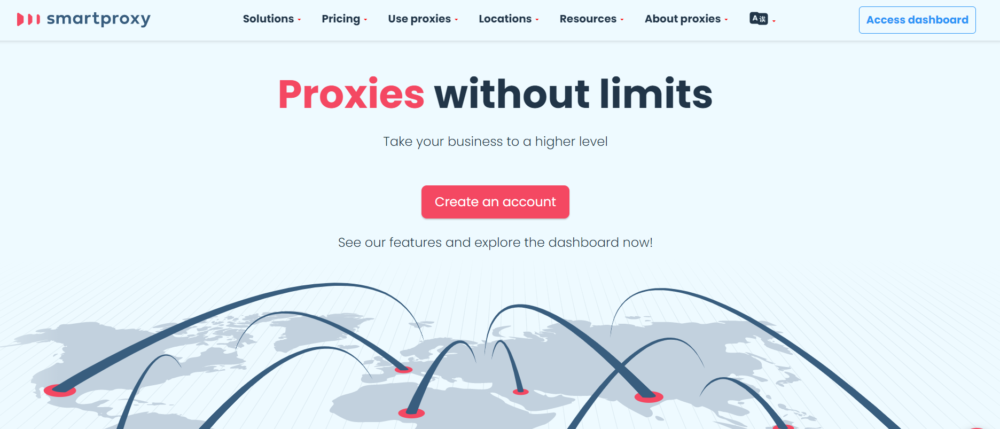
Pros & Cons
Let’s see what the pros and cons of using Smartproxy are-
| Pros | Cons |
|
|
|
|
|
|
|
|
|
Smartproxy Reviews by customer
4. Stormproxies
Stormproxies provides the data center proxies, unlike Bright Data, Proxyrack, and smart proxy. However, it is one of the best-diversified proxy providers in the market in terms of the use cases their proxies apply to.
If we talk about IP rotation (which is most important in web scraping proxies), Stormproxy offers two kinds of rotation: Session-based and time-based rotation.
It contains over 70 thousand IPs in their data center proxy tool and their pricing based on threads (Thread is the number of concurrent requests allowed). Supports only IP authentication and Geo-targeting only in the US and EU.
Pros & Cons
Let’s see what the pros and cons of using stormproxy are –
| Pros | Cons |
|
|
|
|
|
|
|
5. Crawlera
Nowadays, where all web applications face web scraping from developers, their owner becomes so smart of detecting bot behaviors and banning and preventing them from their sites. Also, sometimes you have to put your bot to sleep to stay ways from this blocking system.
But that’s not the case with Scrapinghub’s Crawlera. Personally, I wasn’t able to one of the sites with other web scraping providers; however, with Crawlera, I was able to scrape data with minimal hassle.
If we only talk about web scraping, then Crawlera is one of the most famous and perfect proxy APIs used for web scraping. To evade detection and prevent a ban, it has its own proxy pool. Although, it doesn’t have a captcha solver.
The best thing for me about Crawlera is that its pricing is only based on Successful requests. So, if your requests are getting rejected multiple times, Yeah!!! You will not be charged for it.
Like all other providers, Crawlera has not set their proxy pool size, but we can assume it to tens of thousands. It also has a Geo Targeting feature, and packs start with only 99$ for the first 2,00,000 requests. (remember only successful ones).
Pros & Cons
Let’s see what the pros and cons of using Crawlera are –
| Pros | Cons |
|
|
|
|
|
|
|
|
|
|
|
6. Scraper API
Scraper API is a web scraping proxy provider, as its name says, with more than 40 million IPs in their pool. Unlike all other providers, its pool is a mixer of different proxies- mobile proxies, datacenter proxies, and residential proxies.
To overcome the cons of Crawlera, it provides the support of solving captcha. Apart from this, it also has a feature of handling headless browsers that enables us to use unlimited bandwidth and geotargeting.
Scraper API’s pricing works on API calls. The initial pack started at a cheaper price of 29$ for 2,50,000 API calls.
Here the thing to notice is whether your chosen plan has a geotargeting feature or not because it all depends on you whether you want geotargeting features for your use or not.
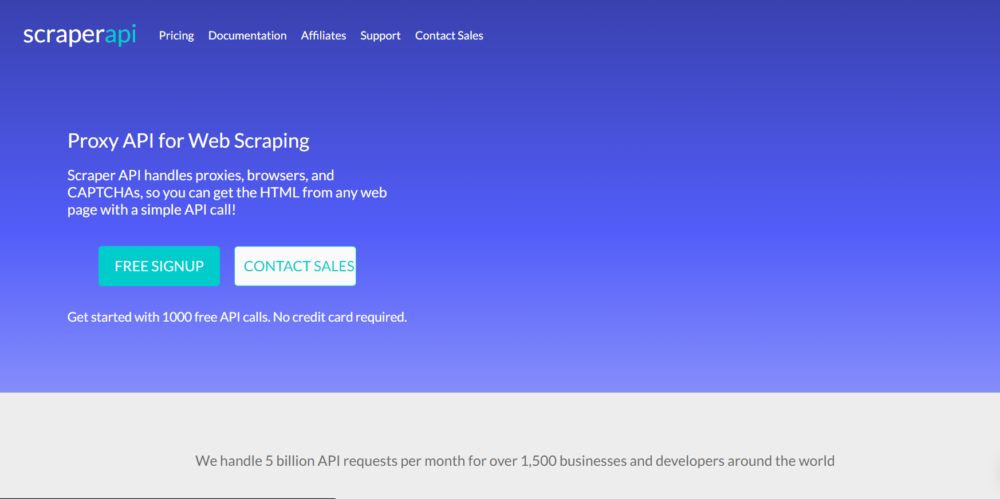
Pros & Cons
Let’s see what the pros and cons of using Scraper API are –
| Pros | Cons |
|
– |
|
– |
|
– |
|
– |
ScraperAPI Testimonial
7. ScrapingBee
The ScrapingBee aims to handle headless browsers and proxies so that you can only concentrate on data extraction. They render all requested pages as it was a real browser using the latest version of Chrome with headless mode.
Not only this, but they also have very large proxy tools with which you can bypass rate-limiting websites that make your bot hide you and prevent you from blocking.
If we talk about proxy rotation, just like Crawlera, it has automatic proxy rotation and supports geotargeting. Indeed, It is the best provider for SEO and web scraping.
As far as pricing is concerned, the initial pack of ScrapingBess starts from just 29$ for around 2,50,000 API credits. And having a free trial option offers 1,000 API calls.
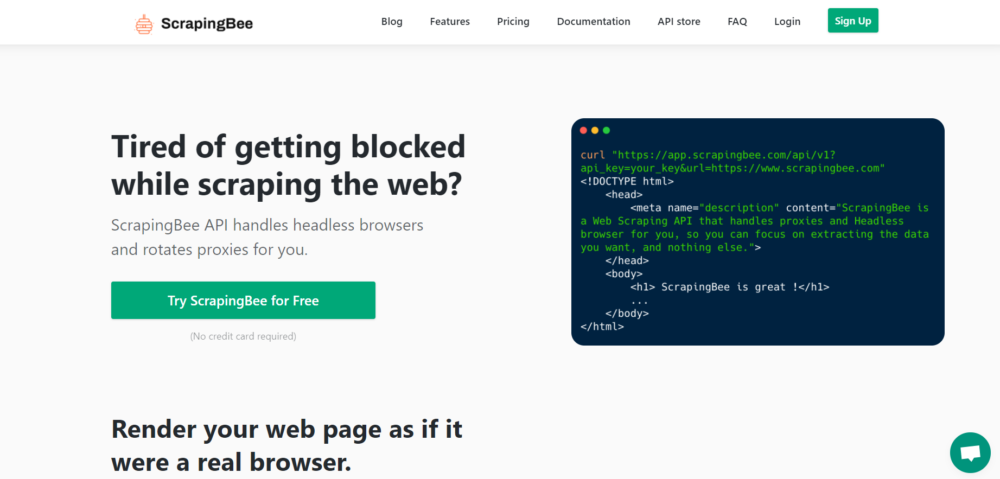
Pros & Cons
Let’s see what the pros and cons of using ScrapingBee are –
| Pros | Cons |
|
– |
|
– |
|
– |
|
– |
|
– |
8. ProxyScrape
ProxyScrape is an online tool that helps users find and verify reliable proxies. It has a huge database of over 70 million proxies, offering unparalleled coverage for all kinds of proxy scraping needs.
The website also offers easy to use API endpoints that make it easier to scrape the desired information quickly and efficiently.
Additionally, its intuitive user interface makes it easy to search and filter through the list of proxies. It also has a proxy checker tool that helps users verify the reliability of proxies, making sure they are not blacklisted or dead.
ProxyScrape is a great tool for anyone who needs reliable and fast proxies for their scraping needs. Whether you’re looking for residential or datacenter proxies, ProxyScrape has you covered.
Pros & Cons
Let’s see what the pros and cons of using ProxyScrape are –
| Pros | Cons |
|
|
|
|
|
9. Proxy Nova
Proxy Nova is a powerful proxy tool that can help you stay safe and anonymous online. It works by routing your traffic through secure, encrypted servers located in different parts of the world.
By masking your IP address and encrypting all data sent to and from you, Proxy Nova ensures that nobody can track or monitor your activity on the web.
Proxy Nova also provides a wide range of features to enhance your security. It offers IP rotation, which switches your IP address randomly after a set interval, making it difficult for anyone to track your online activity over time.
You can also configure Proxy Nova to block malicious and unwanted websites, as well as ads or pop-ups that could potentially harm your computer.
Additionally, you can use Proxy Nova to surf the internet securely and anonymously while bypassing geo-restrictions and website censorship.
Pros & Cons
Let’s see what the pros and cons of using ProxyScrape are –
| Pros | Cons |
|
|
|
|
|
10. SSL Proxy
An SSL Proxy is a proxy server that uses Secure Sockets Layer (SSL) to encrypt traffic between the client and the proxy server.
This ensures that all data sent through the connection remains private, secure, and inaccessible from third parties.
The encryption provided by an SSL Proxy makes it virtually impossible for hackers or other malicious actors to intercept or access any of the data traveling through the connection.
This makes it an ideal solution for businesses that need to ensure the privacy and security of their customer’s data.
Additionally, SSL Proxies can be used to bypass censorship, allowing users to access websites that may be blocked by their local network or country’s internet regulations.
SSL Proxies typically run on the same physical hardware as the end user. This allows for a more secure connection and faster speeds, since all of the traffic is routed directly to the Proxy server instead of going through various other internet nodes along the way.
Pros & Cons
Let’s see what the pros and cons of using ProxyScrape are –
| Pros | Cons |
|
|
|
|
|
|
|
11. Oxylabs:

Oxylabs is a popular proxy service company that offers reliable and high-quality proxy solutions to their clients. They have been in the business for several years and have a great reputation for delivering top-notch services.
One of the biggest advantages of using Oxylabs as a proxy provider is their vast proxy pool. They have over 100 million residential proxies and over 2 million data center proxies globally, which is one of the largest in the industry.
This means that clients can easily find the perfect proxy for their specific needs and location.
Pros & Cons
| Pros | Cons |
|
|
|
|
|
|
|
Oxylabs Testimonials
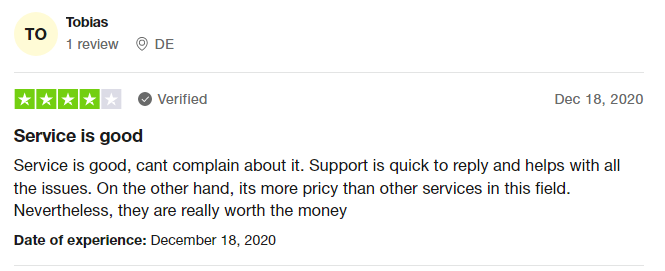
12. ScrapingBee
ScrapingBee is a web scraping API that makes it easier than ever to fetch data from websites. It’s designed to be easy-to-use, requiring minimal setup and coding knowledge.
By using ScrapingBee, you can set up custom scrapers in a matter of minutes that will extract the exact data you need from any website or multiple websites at once.
ScrapingBee takes the hassle out of web scraping by allowing you to set up data extraction with minimal effort. With ScrapingBee’s advanced features, you can fine-tune your scrape for maximum efficiency and accuracy.
There are no limits on the types of websites or data sources that can be scraped using ScrapingBee, so you can collect data from any type of website.
Additionally, ScrapingBee offers powerful solutions for managing and organizing scraped data, making it easier than ever to use the extracted information.
Pros & Cons
| Pros | Cons |
|
|
|
|
|
Quick Links
FAQs | Top Web Scraping Proxies
You will find many complicated answers on the internet. But, let me tell you the simplest one. The residential proxies are IP addresses from a standard ISP (Internet Service Provider), a mostly wired connection directly into your home. On the other hand, Datacenter proxies are IP addresses not located in your home and come from a secondary corporation.
The total number of proxies is nothing but a mathematical function of the number of pages you want to scrape per hour and requests allowed on the website. >>(Request limit / number of request) = proxies needed you Let us consider an example by taking some random numbers. Assume you want to scrape 20,000 pages, and the limit of requests is 200 per hour. Your total number of proxies are - 20,000 / 200 = 100 proxies
Comparatively, if we see both results, we will find that the result will be mostly the same. However, proxy APIs take one step in the costing and pricing. The reason behind this is that API helps you handle proxy management problems and handling captcha.
As I said in the article and conclusion, It all depends on your project budget, requirements, and your targeting site. Still, you should use proxies that are not detected and blocked by the site are the best. I believe that residential proxies are one of the best for doing web scraping business.
If your web scraping business works on simple and static websites then you can use free proxies. While in the case of a complex and secured website free proxies might not work. At that time you must have to take support from paid proxy providers as they provide all features like preventing blocking, geo-targeting, and etc. 🤩 What's the difference between Residential proxies and Datacenter proxies?
👍 How many proxies do you need for your project?
👋 What should I use? Proxies or Proxy API?
👉 For a Web scraping business which proxy is the best?
🙌 Should I use free proxies for web scraping?
Conclusion | Top Web Scraping Proxies in 2024
In the business of web-scraping, proxy plays a major role. They are very beneficial when we want to hide our IP address and access geotargeting web content.
However, while working on web scraping, not all the proxies will work. I believe that there is no specific or particular best proxy for every type of project. It all depends on the project requirement, experience, and budget.

